
Because once you eliminate weak points, you will unleash MASSIVE gains in strength in your Big Three exercises.
Your body becomes capable of lifting MORE weight through the entire range of motion of the exercise once you attack and destroy those weak links that are holding you back.
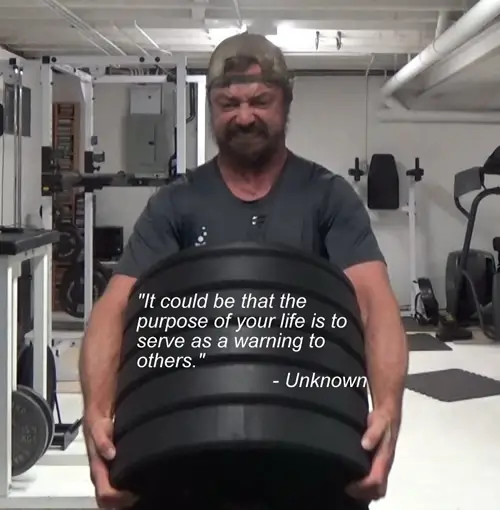

TARGET WEAK POINT: Sticking Point of the Bench Press
If you have trouble getting past the sticking point of the bench press (which is normally a few inches off the bottom of the press), the Floor Press is a great exercise to help you develop power to get through it.
The range of motion is shorter than a regular barbell press...the positioning of the arms at the bottom of this exercise is generally right at the sticking point of the bench press where the leverage in the shoulder changes.
And yes, this exercise is normally done on the floor (I mean, it's right in the name). THIS version brings you up off the floor yet works in exactly the same way...only BETTER.
It will allow you to better drive with your legs to generate additional power for the press, which is a critical thing to learn in order to press more weight (if you drive with the legs in a regular floor press, it will tend to pop your hips off the floor).
How To Do It:
Set your flat bench in the rack, parallel to the bar. You'll want to set the safety rails to just below the bottom point in the range of motion here (try it with just the empty bar the first time you do it to get a gauge of the setup).
Sit on the bench.
Now shift your hips forward off the bench so that your upper back is resting on the bench. Unrack the bar as you normally would.
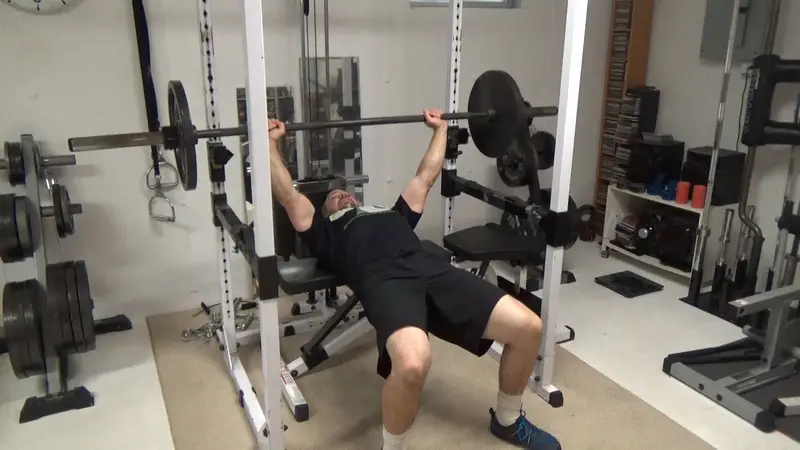
Lower the bar until your upper arms are resting flat on the bench. Take tension off the pecs, letting the bar be fully supported by your forearms and bench.
Make sure you're not flaring your elbows wide to the side...you do want a bit of "tuck" in the elbows in order to generate more power and save your shoulders.
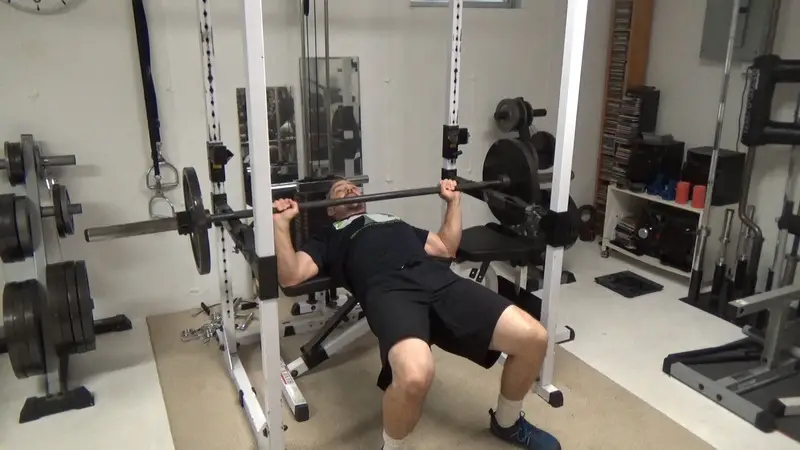
GOOD TIP: At the bottom of the movement, right before you start the press, actively push your elbows down into the bench to activate the muscles of the upper back. This gets the shoulder blades back (retracted), which puts the body in perfect position for pressing.
Now re-engage the pecs, developing tension in them. Then press up out the bottom with a smooth, powerful movement. Don't try and pop it off the bottom...squeeze it off the bottom.
At the very moment you start to press up, push backwards with your legs (leg drive) as though trying to slide yourself backwards on the bench. This drive transfers force through the core and into the upper body, helping send the bar upwards.
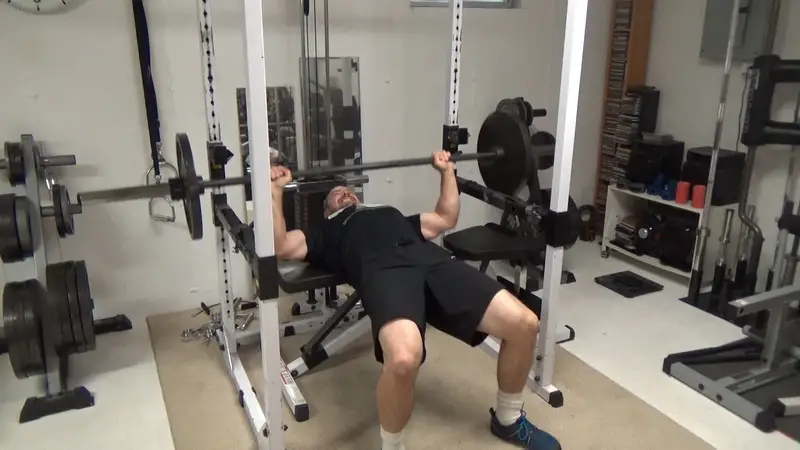
Power the bar up to the top as quickly as possible, then repeat.
I would recommend doing 4 to 6 reps for this one, for 3 sets with about 90 seconds rest between sets.
Start light the first time you do it, to get an idea of how it's done, then move up in weight until you're getting close to failure (but not TO failure) in that rep range.
Make sure you practice TIGHT form on every rep...lower under control, release the tension in the chest once your arms are down, then power out of the bottom with leg drive.

TARGET WEAK POINT: Deadlift Lockouts
This exercise is INCREDIBLY effective for developing lockout strength in the deadlift. The movement and tension pattern it hits will help you basically eliminate lockout weakness in your deadlift.
This exercise is just the top part of the Stiff-Legged Deadlift movement, done in the power rack but with a very important focus...instead of focusing on the hamstrings, you'll instead be pulling your upper back into a highly-contracted position THEN performing the movement.
This is going to put substantial tension on your upper back muscles so that they get worked with a lot more weight than they normally would with a rowing exercise.
Once those upper back muscles are contracted and locked in, they don't contribute to the lockout movement itself as you lift the bar off the rails.
The actual LIFT is going to be ALL lower back, glutes and hamstrings....you're basically using the "retraction/lockdown" to strengthen the upper back isometrically while you lift it with the hip extension muscles.
Why these are better than rack pulls...
One of the problems with rack pulls is the tendency to make them "ugly" just to lift more weight. People will leverage the bar off the thighs and use the upper back and traps to shrug the bar up. This is great for using a lot more weight, but not effective for actually building the deadlift lockout.
If you look at a deadlift, the knees are straightened out before you ever get near the top of the lift...if your knees are still bent when you get near the top, you're doing deadlifts wrong and you're pulling the bar AROUND your bent knees.
This exercise mimics the ACTUAL pattern of the lockout in the deadlift.
As well, because you're strengthening the upper back muscles, it helps to minimize upper back rounding when using heavier loads with the deadlift (i.e. the vomiting cat position).
How To Do It:
Set the pins in the power rack to just above knee height and load the bar. Use a weight you could do for at least 3 to 5 full reps on the full range stiff-legged deadlift when you try this for the first time. You can increase this once you get comfortable with the exercise.
Now here's the important part...once you've gripped on the bar (about shoulder width, double-overhand grip...use grip assistance if necessary), lock your elbows then pull your chest towards the bar. Pull your shoulders back, retracting the shouldder blades, contracting all your back muscles HARD and lock them there.
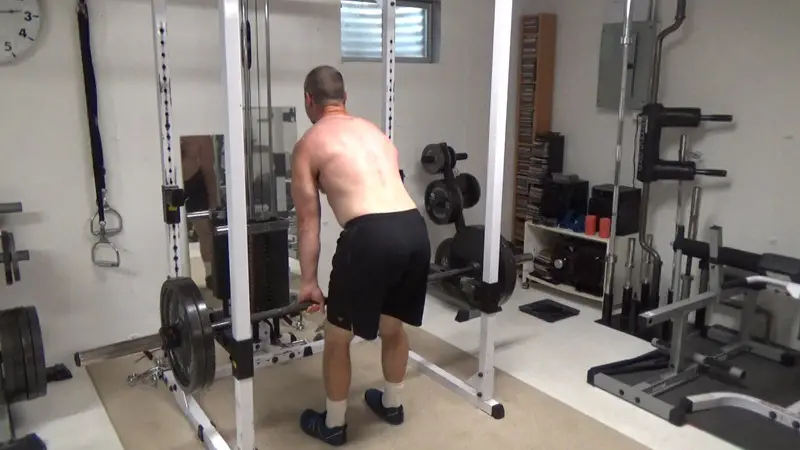
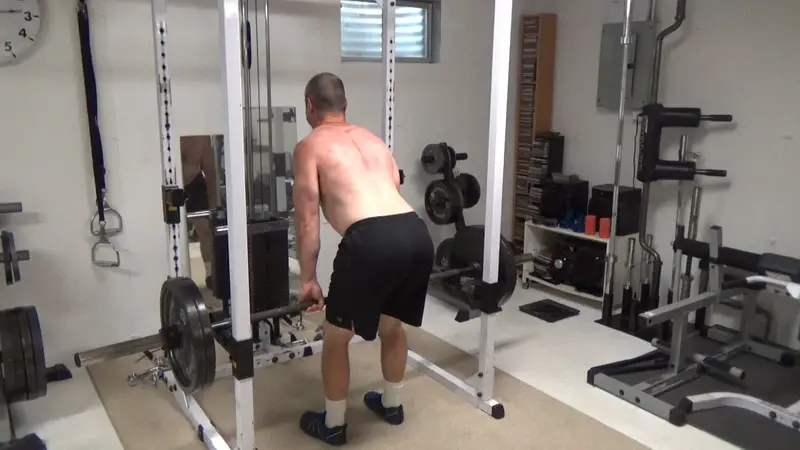
You want to strive to keep this "shoulders-back" position through the entire movement as that's that real valuable part of this exercise.
Now lift the bar off the rails - squeeze it off, don't blast it off quickly. You want to pull some bend into the bar then squeeze the bar off the rails.
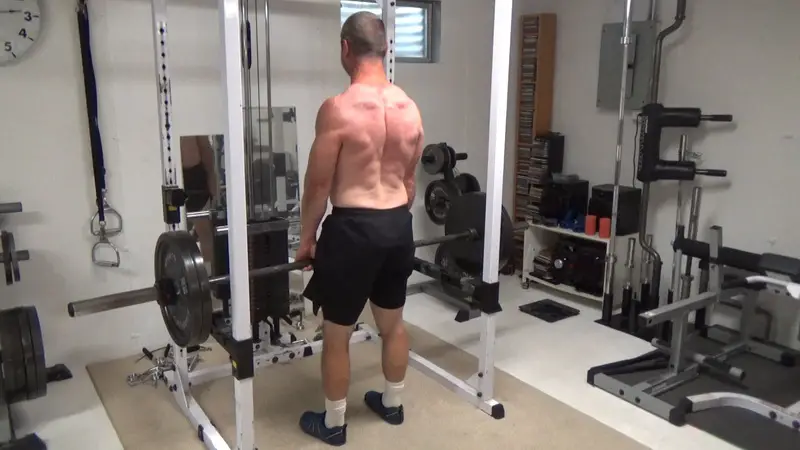
Keep your shoulders BACK and TIGHT. You'll feel the tension of the weight trying to pull your shoulders forward...do your absolute best to keep them back using those muscles of the back. This will force a strong contraction in your upper back and will force your lower back and glutes to kick in to perform the movement.
This exercise is also going to help your regular deadlift in that it'll help prevent your thoracic (upper) spine from curving forward too much, especially at the lockout. By building upper back strength, you can help minimize that curving and make heavy deadlifting safer. This is actually the reason I originally came up with this exercise...I found when I was doing deadlifts and hitting 550 lbs or more, my thoracic spine was rounding more than I'd liked.
Set the bar fully on the rails on each rep. This is important because you'll want to reset your upper back "contraction" position on every single rep, before you go again. I also recommend holding your breath during the first part of the movement to keep your torso solid and stabilized.
This is a GREAT exercise for developing deadlift lockout strength, building thickness in the upper back and strengthening the retraction of the shoulder blades for bench pressing.
A strong back that can keep the shoulders pinned tightly behind your back (retracted) forms a more solid platform to press from. The strength you build here means that even when heavy weight tries to flatten your torso out, you'll have the upper back strength to maintain that shoulder position.

TARGET WEAK POINT: Bracing Core Strength on Squats and Deadlifts
Core bracing strength is one of the most common weak points you'll run into with both squats and deadlifts.
When you're coming out of the bottom position, if your deep core muscles lose the brace, they won't provide a solid foundation to generate power through and you'll lose the lift.
This squat exercise focuses very specifically on those deep core muscles (the obliques and transverse abdominis) by taking the load off your body and putting it out in front of you.
Think of it like a Front Squat but worse...
How To Do It:
I recommend doing these in the power rack. Take a shoulder-width grip on the bar and hold it in the top position of a barbell curl, close to your chin. The goal here is not bicep contraction...your forearms should be kept vertical so that your biceps don't become the weak link of the exercise.
Start with a light weight to get the idea of how it's done, then progress up from there.
Set your feet out fairly wide for stability.
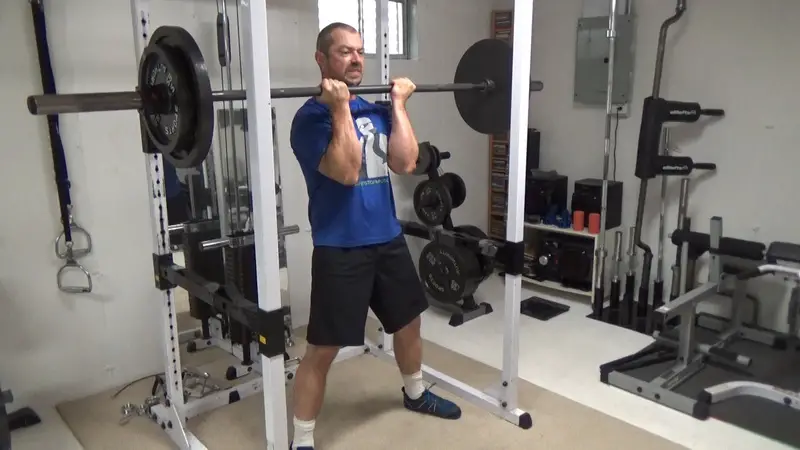
Now squat down...hold for a second or two at the bottom, then come back up. DO NOT suck in your gut at the bottom. Brace outwards and solidify your stomach like you're about to get punched in the gut. You can definitely use a belt for this one, as you get into heavier weights.
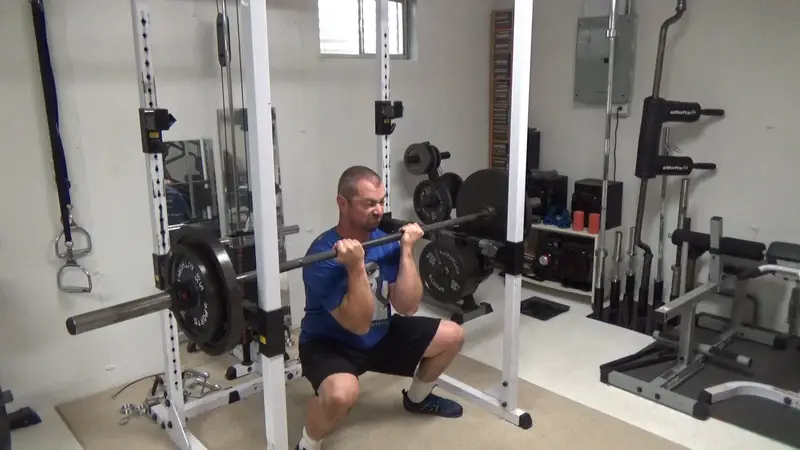
This bottom position is where the magic happens...it's very specific to the squat in terms of developing bracing strength, though it will definitely carry over to your deadlifting as well.
Come up to the top, then repeat.
I recommend doing this one for fairly low reps (3-5 per set). The purpose of this one is building bracing strength in the deep core muscles, and that requires heavier loads and lower reps.
It's a very straightforward exercise that will have a HUGE impact on not only your entire abdominal area for core bracing strength, but your entire BODY as well. Supporting the weight in this fashion challenges not only the abs but the biceps, shoulder girdle and legs as well.
Share This Page...
Contact
For Product Support, please contact our Helpdesk
Copyright 2022 BetterU, Inc. ©

